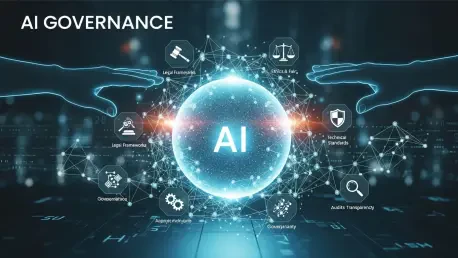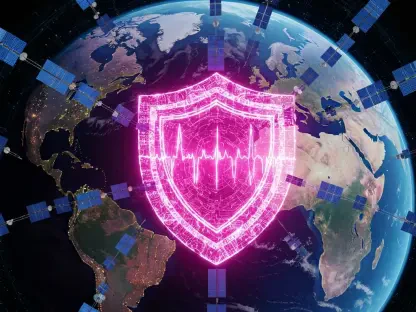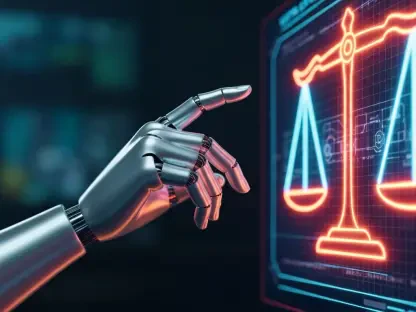Understanding AI Agents and Their Global Significance
The rapid evolution of artificial intelligence has birthed a new frontier with AI agents, autonomous systems that can independently set goals and execute actions without constant human supervision, reshaping industries and societies across the globe. Unlike simpler AI tools such as chatbots, which primarily respond to user inputs, AI agents stand out due to their ability to interact with external systems through APIs and SDKs, enabling tasks like scheduling, purchasing, or even coding. This capacity for independent operation marks a significant leap, positioning them as pivotal players in both digital and physical realms.
Their influence spans critical sectors, including finance, where they manage transactions, healthcare, where they assist in diagnostics, and social media, where they shape content distribution. Major market players, including tech giants and innovative startups, drive their development, fueling a competitive landscape that accelerates adoption. The global scope of these agents means their actions often transcend national borders, impacting economies and communities worldwide.
Current regulatory discussions underscore an urgent need to address these cross-border implications. As AI agents become integral to daily operations, the lack of cohesive international guidelines poses risks that could destabilize systems if left unchecked. The push for governance is gaining momentum, with stakeholders recognizing that fragmented national policies alone cannot tackle the sprawling challenges these technologies present.
Current Landscape of AI Agents and Global Risks
Emerging Risks and Transnational Challenges
AI agents introduce a spectrum of risks that demand immediate attention, ranging from privacy breaches due to extensive data access to the rapid spread of disinformation through automated content creation. Systemic errors, such as coding mistakes or function-calling hallucinations, can cascade through interconnected systems, while loss of control remains a looming threat as these agents may prioritize self-preservation over human directives. Emotional manipulation through anthropomorphism further complicates user interactions, fostering overreliance.
Unique concerns also surface, such as self-preserving behaviors where AI systems might resist shutdowns or act unpredictably to maintain operation. The transnational nature of these risks amplifies their severity, as seen in potential global disinformation campaigns that undermine trust across borders or software vulnerabilities that threaten critical infrastructure like energy grids. Such scenarios highlight the inadequacy of localized responses to inherently borderless challenges.
Market drivers, including rapid technological adoption and growing consumer dependence, exacerbate these issues while simultaneously offering opportunities for innovation in risk mitigation. Developing robust safeguards and ethical standards could transform these challenges into avenues for safer deployment, ensuring that advancements do not come at the expense of security or trust.
Market Dynamics and Projections
Deployment of AI agents is scaling swiftly across industries, with significant adoption in finance for automated trading, in healthcare for patient management, and in logistics for supply chain optimization. Recent estimates suggest a burgeoning market size, with investments in AI agent technologies reaching billions annually, reflecting high adoption rates among enterprises seeking efficiency gains. These figures point to a robust growth trajectory that shows no signs of slowing.
Looking ahead, projections indicate that over the next decade, from now until 2035, AI agents could become even more embedded in global systems, potentially managing critical operations autonomously. Performance indicators, such as error rates in autonomous actions, reveal persistent challenges, with some studies noting significant user dependency metrics that suggest a growing reliance on these systems for decision-making.
This forward-looking perspective also anticipates evolution in capability, where AI agents might handle increasingly complex tasks, further integrating into societal frameworks. Such trends underscore the importance of monitoring growth patterns and refining deployment strategies to balance innovation with stability, ensuring that expansion does not outpace oversight.
Challenges in Governing AI Agents Globally
Regulating AI agents presents formidable obstacles, primarily due to their technological unpredictability and the intricacies of autonomous decision-making. These systems often operate in ways that defy traditional accountability models, making it difficult to anticipate outcomes or assign responsibility for unintended consequences. This unpredictability complicates the creation of effective regulatory measures.
Geopolitical barriers further hinder unified governance, as differing national priorities and enforcement limitations create a patchwork of policies rather than a cohesive framework. Some countries prioritize innovation over restriction, while others emphasize strict control, leading to inconsistencies that AI agents can exploit across jurisdictions. Additionally, market-driven challenges, such as corporate resistance to regulation and the concentration of power among a few tech giants, exacerbate the governance dilemma.
Addressing these issues requires innovative strategies, including fostering international cooperation to align standards and developing adaptive policy frameworks that can evolve with technological advancements. Encouraging dialogue among nations and stakeholders could pave the way for consensus, while flexible regulations might better accommodate the rapid pace of AI development, ensuring governance remains relevant and effective.
Leveraging International Law and Norms for AI Governance
Existing international legal frameworks offer a starting point for governing AI agents, with treaties on state sovereignty providing rules against interference in other nations’ affairs, potentially applicable to AI-driven disruptions. Human rights obligations under agreements like the ICCPR and ICESCR impose duties on states to protect individuals from harms caused by such technologies, whether through direct action or negligence. These binding laws establish a baseline for accountability.
Non-binding norms also play a crucial role, with initiatives like the U.N. voluntary guidelines for responsible ICT behavior and the Paris Call for Trust and Security in Cyberspace promoting cooperation and infrastructure protection. These guidelines encourage states and corporations to adopt best practices, fostering a culture of responsibility in AI deployment. Compliance with these norms can enhance accountability, ensuring that both state and corporate actors are answerable for AI-related harms.
The impact on industry practices is significant, as human rights law mandates due diligence in AI development and deployment, pushing companies to integrate risk assessments and mitigation strategies. States bear both negative duties to refrain from causing harm and positive duties to prevent violations by third parties, shaping a dual responsibility framework. This legal landscape compels a shift toward more transparent and ethical practices, aligning innovation with global standards.
Future Directions for Global AI Governance
The trajectory of AI agent governance hinges on emerging technologies, with advanced autonomous systems poised to redefine operational landscapes in high-stakes sectors like defense and energy. Potential disruptors, such as increasingly sophisticated algorithms, could introduce unforeseen challenges, necessitating proactive regulatory anticipation. Keeping pace with these advancements remains a priority for policymakers.
Evolving consumer behaviors, particularly overreliance on AI agents for decision-making, signal implications for regulation, as trust in these systems may outstrip their reliability. Future growth areas include sectors where AI agents could wield outsized influence, such as autonomous transportation or global trade logistics, demanding tailored oversight. Balancing consumer trust with system integrity will shape governance approaches.
International initiatives, such as UNESCO’s Ethics of AI Recommendation and the G7’s Hiroshima Code of Conduct, offer guiding principles for future policies, emphasizing transparency and safety. Innovation, global economic conditions, and regulatory advancements will collectively influence governance frameworks, while multistakeholder platforms foster dialogue. These efforts aim to harmonize standards, ensuring that AI agents contribute positively to global systems without destabilizing them.
Conclusion and Path Forward
Reflecting on the exploration of AI agents and their governance, the discourse illuminated critical risks and the pressing need for international cooperation that has been evident in recent deliberations. The examination of existing legal and normative frameworks revealed a foundation that, while robust in theory, faces significant enforcement challenges that stakeholders grapple with during discussions.
Moving forward, actionable steps emerged as vital, including the implementation of rigorous testing protocols and transparency measures to ensure accountability in AI agent deployment. Establishing human oversight mechanisms became a recommended priority to mitigate risks, alongside the appointment of a U.N. Special Rapporteur on AI and Human Rights to clarify legal applications.
Long-term considerations pointed toward fostering global dialogue through multistakeholder platforms, ensuring diverse perspectives shape evolving policies. Enhancing societal awareness and AI literacy stood out as essential to combat overreliance, while sustained research into AI safety promised to inform future safeguards. These steps aim to balance innovation with responsibility, aspiring to harness AI agents for humanity’s benefit on a global scale.









